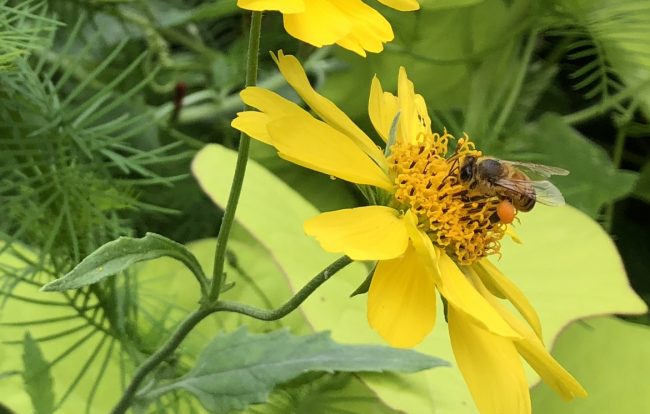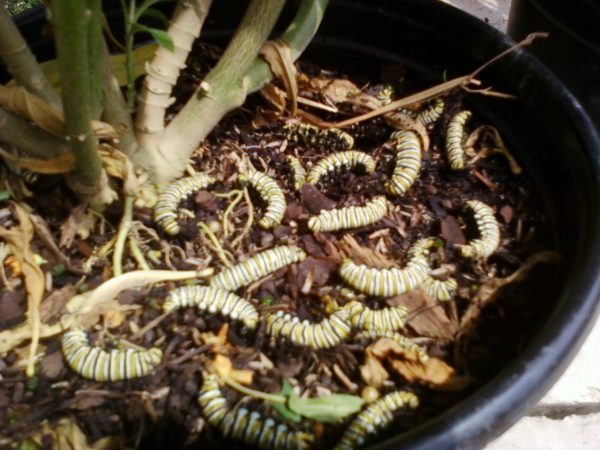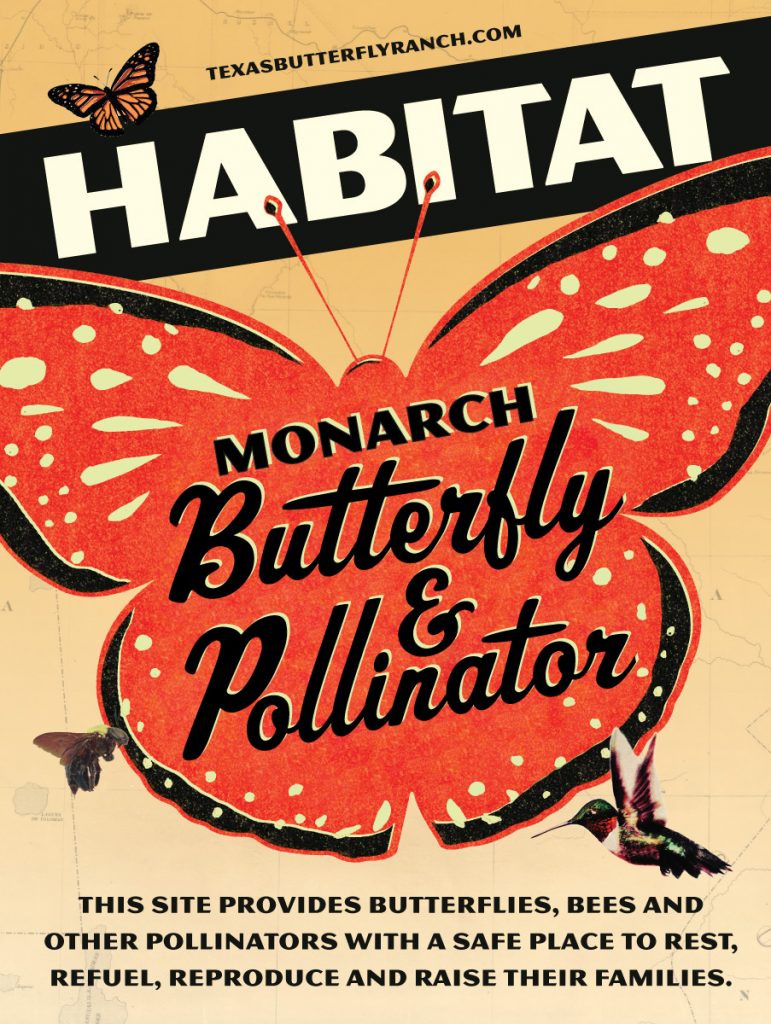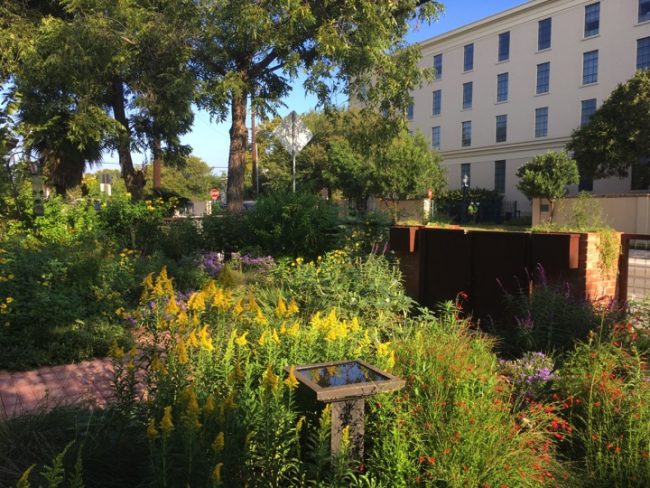POLLINATOR HABITAT INITIATIVE
Take the initiative and pledge to plant for pollinators!
Want more birds, bees and butterflies in your landscape? Pledge to plant for pollinators! We need more wildlife friendly habitats now, more than ever.
Pollinator habitats can be beautiful and low maintenance, once established. More important, they fill a growing need to restore wildscapes to the earth and the balance that comes with cultivating diverse and balanced ecosystems. They also provide safe places for the insects and others that make one out of every three bites of our food possible to rest, refuel and raise their families.
Pollinator habitats save water and don’t require pesticides. You can grow one in your front or back yard, carve a pocket prairie out of your lawn, or transform a whisky barrel or large pot into a pitstop for pollinators. Size is not as important as plant diversity, seasonal blooms and host plants that keep pollinators thriving.
Minimum Requirements for a Pollinator Habitat
- At least six different native and/or well-adapted, noninvasive plants, including
- At least two larval host plants (the plants on which butterflies lay their eggs)
- At least two spring nectar plants (plants that bloom in the spring, providing energy/fuel)
- At least two autumn nectar plants (plants that bloom in the fall, providing energy/fuel)
- A diverse mix of spring, summer, and fall blooms.
Also Encouraged
- NO pesticides in your habitat (See WARNING at bottom of this page)
- Mulching the garden or installing dense plugs of plants to choke out undesirable weeds and conserve moisture
- If using the non-native Tropical Milkweed (Asclepias curassavica) follow best practice and cut it back in late summer to keep migrating monarch butterflies moving and avoid possible disease build-up
- Have a recessed area where water can puddle so butterflies can hydrate and take up necessary nutrients, and
- Consider dead plants and spent seed heads as overwintering shelters for moths, butterflies, and other wildlife. Chop them down in late winter/early spring after you’ve inspected them for eggs, cocoons and other signs of life.

Monarch butterfly on Swamp milkweed.
Photo by Monika Maeckle

European honey bee on Cowpen Daisy.
Photo by Monika Maeckle
Gracias!
Thank you for your commitment to helping restore pollinators. We join the bees, butterflies, bats, birds, and beetles in our gratitude for your commitment to help. And gracias to our community collaborators for helping us pollinate this idea.
DON’T LET THIS HAPPEN TO YOU!

Dead Monarch caterpillars fall victim to pesticide-laced milkweed.
Photo by Sharon Sander
Warning: KNOW YOUR GROWERS
Ask the plant seller: Have these plants been treated with systemic pesticides? Systemic pesticides can linger in plant biomass for months and when consumed by caterpillars (future butterflies and moths), will kill the creatures. Read more here.


